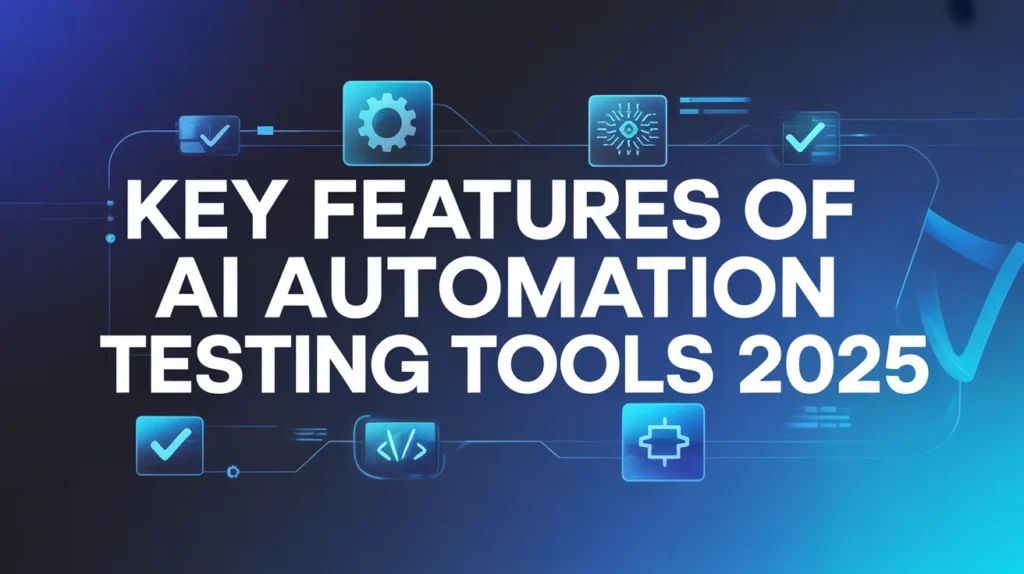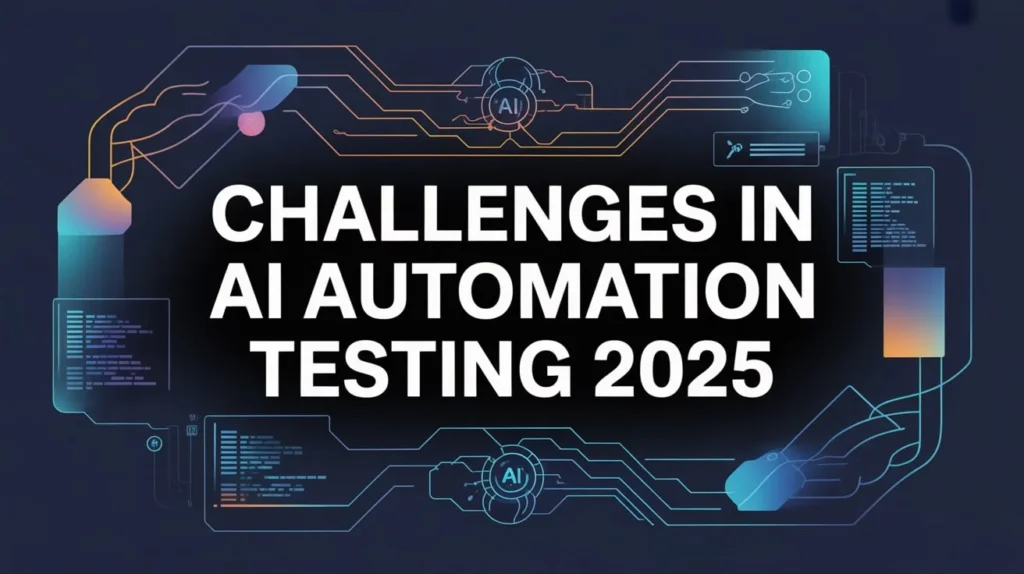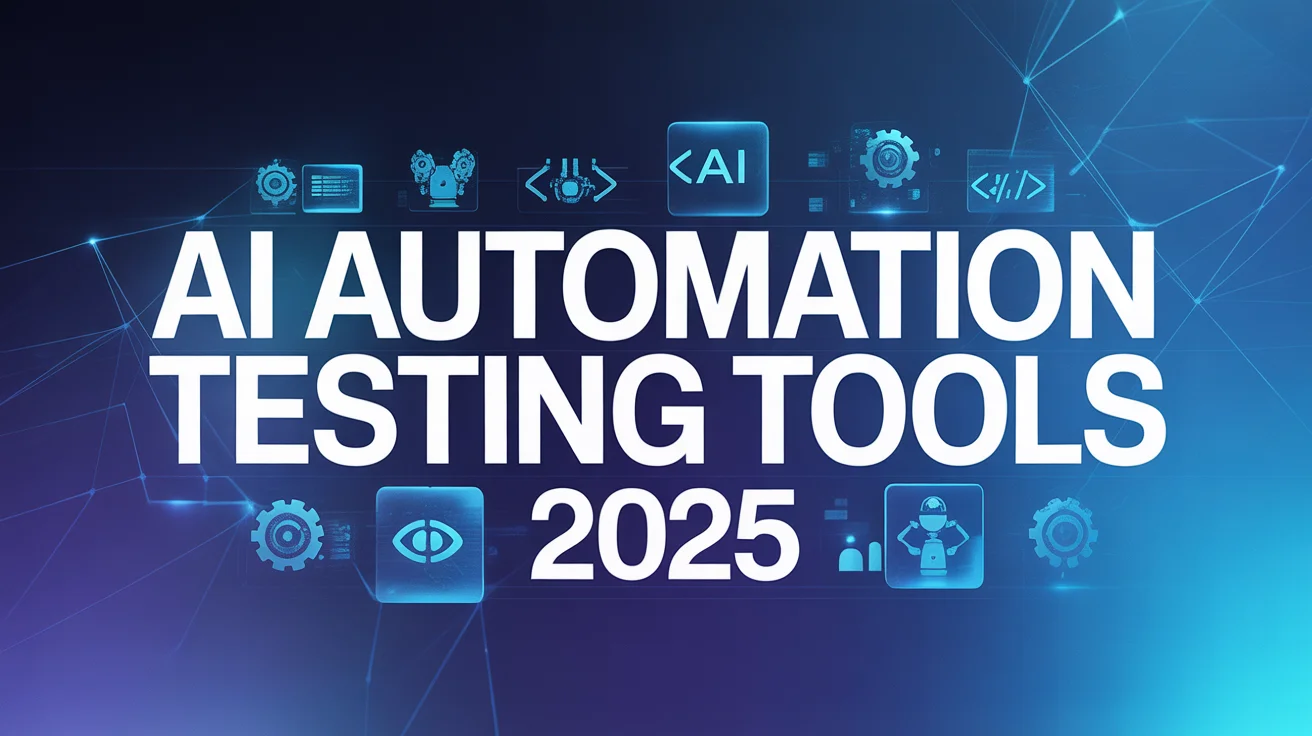The digital landscape is evolving faster than ever, and businesses are under constant pressure to deliver high-quality software at lightning speed. This is where AI automation testing tools 2025 come into play, blending the precision of artificial intelligence with the efficiency of automated testing.
From reducing manual effort to identifying bugs before they cause disruptions, these tools empower developers, QA teams, and enterprises to stay ahead in the competitive market.
With the rise of DevOps, agile methodologies, and AI-driven solutions, companies are now prioritizing smarter, faster, and more reliable testing practices.
Why AI Automation Testing Tools Are Crucial in 2025
Artificial intelligence has shifted from being a buzzword to a necessity in software development. In 2025, AI-powered automation testing tools are not only helping businesses cut down time-to-market but also improving overall product stability. They use machine learning algorithms to analyze test results, predict failures, and optimize testing cycles.
Key Features of AI Automation Testing Tools 2025

The top AI automation tools today are designed with the following standout features:
- Self-healing scripts: Automatically adapt to changes in the application.
- Predictive analytics: Forecast potential bugs or performance issues.
- Visual testing: Identify UI/UX flaws using AI vision technology.
- Scalability: Handle testing needs for small apps to enterprise-level solutions.
- Cross-platform support: Mobile, web, and desktop testing in one solution.
Top AI Automation Testing Tools in 2025
Here’s a quick look at some of the best AI-driven automation testing platforms leading the industry in 2025:
Tool NamePrimary Use CaseAI CapabilitiesPricing ModelTestimWeb & Mobile TestingSelf-healing tests, AI locatorsSubscription-basedApplitoolsVisual UI/UX TestingAI-powered visual comparisonsPay-per-use & PlansMablEnd-to-End TestingAuto-maintenance, ML insightsFlexible plansKatalon StudioCross-Platform AutomationAI-driven reporting & debuggingFreemium + PremiumFunctionizeCloud TestingNLP test creation, self-healingEnterprise pricingTestCraftSelenium-Based AutomationAI for faster script buildingSaaS subscription
Benefits of Using AI Automation Testing Tools
Using AI automation testing software in 2025 brings multiple advantages:
- Saves time by automating repetitive test cases.
- Enhances accuracy with machine learning-driven insights.
- Reduces costs by minimizing human intervention.
- Provides scalability for complex enterprise applications.
- Boosts developer and QA team productivity.
Challenges in AI Automation Testing 2025

While these tools are powerful, challenges remain:
- Initial setup costs can be high.
- AI requires large datasets to function optimally.
- Some tools may have a steep learning curve.
- Integration with legacy systems can be tricky.
Future of AI in Software Testing
By 2025 and beyond, AI in automation testing will continue evolving with more self-healing capabilities, predictive analytics, and natural language test generation. Soon, we may even see AI tools that automatically create and run entire test frameworks without human intervention.
FAQs
Q1. What are AI automation testing tools in 2025? They are advanced testing platforms that use AI and machine learning to automate, predict, and optimize software testing processes.
Q2. Which is the best AI automation tool in 2025? Tools like Testim, Applitools, and Mabl are among the most popular due to their self-healing and AI-driven insights.
Q3. How do AI testing tools differ from traditional automation tools? Unlike traditional tools, AI-driven platforms adapt to changes automatically, predict failures, and provide smarter analytics.
Q4. Are AI automation testing tools expensive? Pricing varies, but many offer flexible plans including freemium, subscription, and enterprise models.
Q5. Can AI completely replace manual testers? No, AI enhances testing efficiency but human testers are still vital for exploratory, usability, and creative testing.
Conclusion
The year 2025 marks a turning point for software testing as AI automation testing tools become the backbone of modern QA processes. From self-healing test scripts to AI-driven analytics, these tools ensure faster releases, improved accuracy, and higher user satisfaction.
While challenges exist, the benefits far outweigh the drawbacks, making AI-powered automation an essential investment for businesses aiming to thrive in the digital age.


